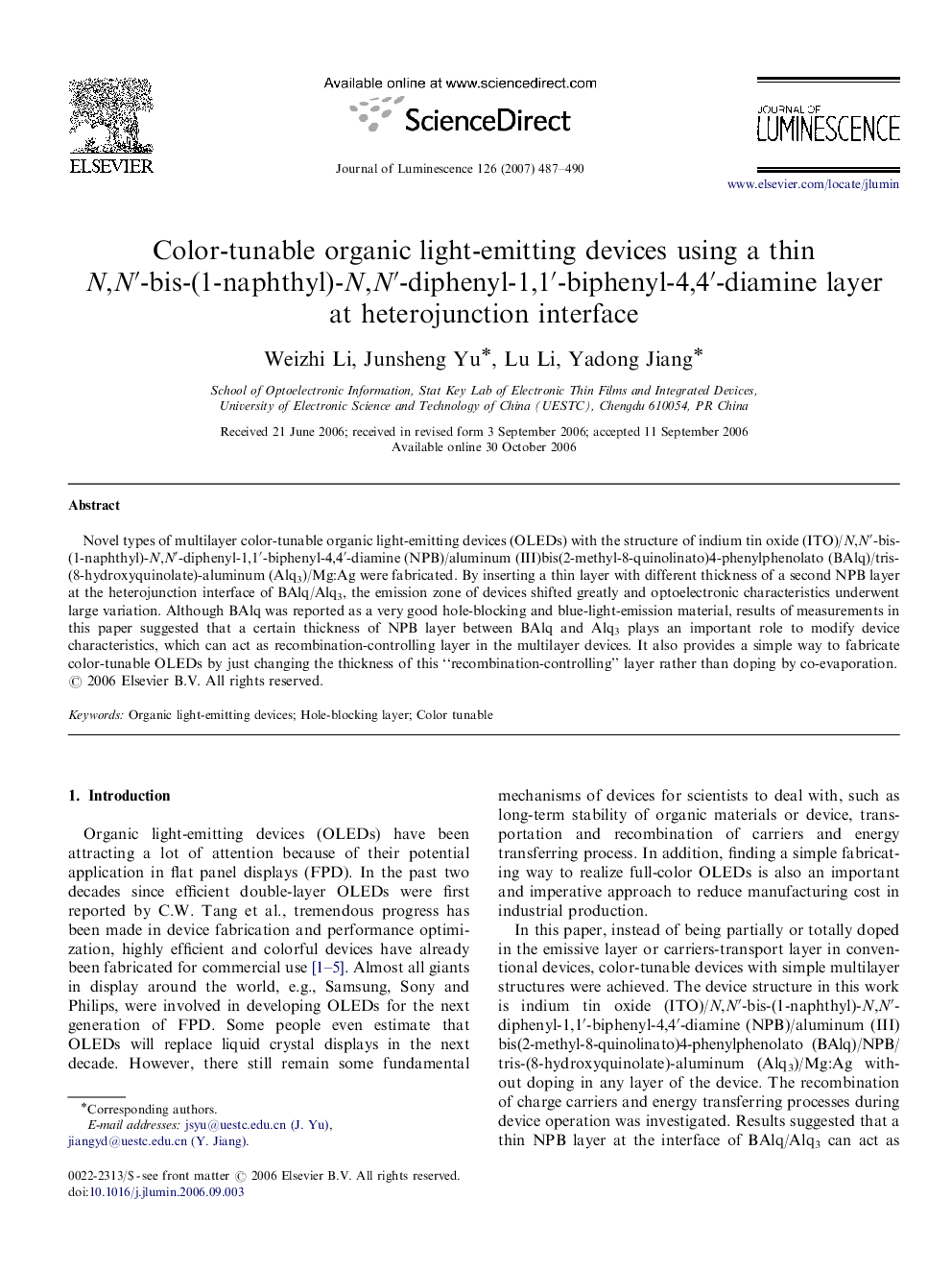| Article ID | Journal | Published Year | Pages | File Type |
|---|---|---|---|---|
| 5403358 | Journal of Luminescence | 2007 | 4 Pages |
Abstract
Novel types of multilayer color-tunable organic light-emitting devices (OLEDs) with the structure of indium tin oxide (ITO)/N,Nâ²-bis-(1-naphthyl)-N,Nâ²-diphenyl-1,1â²-biphenyl-4,4â²-diamine (NPB)/aluminum (III)bis(2-methyl-8-quinolinato)4-phenylphenolato (BAlq)/tris-(8-hydroxyquinolate)-aluminum (Alq3)/Mg:Ag were fabricated. By inserting a thin layer with different thickness of a second NPB layer at the heterojunction interface of BAlq/Alq3, the emission zone of devices shifted greatly and optoelectronic characteristics underwent large variation. Although BAlq was reported as a very good hole-blocking and blue-light-emission material, results of measurements in this paper suggested that a certain thickness of NPB layer between BAlq and Alq3 plays an important role to modify device characteristics, which can act as recombination-controlling layer in the multilayer devices. It also provides a simple way to fabricate color-tunable OLEDs by just changing the thickness of this “recombination-controlling” layer rather than doping by co-evaporation.
Related Topics
Physical Sciences and Engineering
Chemistry
Physical and Theoretical Chemistry
Authors
Weizhi Li, Junsheng Yu, Lu Li, Yadong Jiang,
